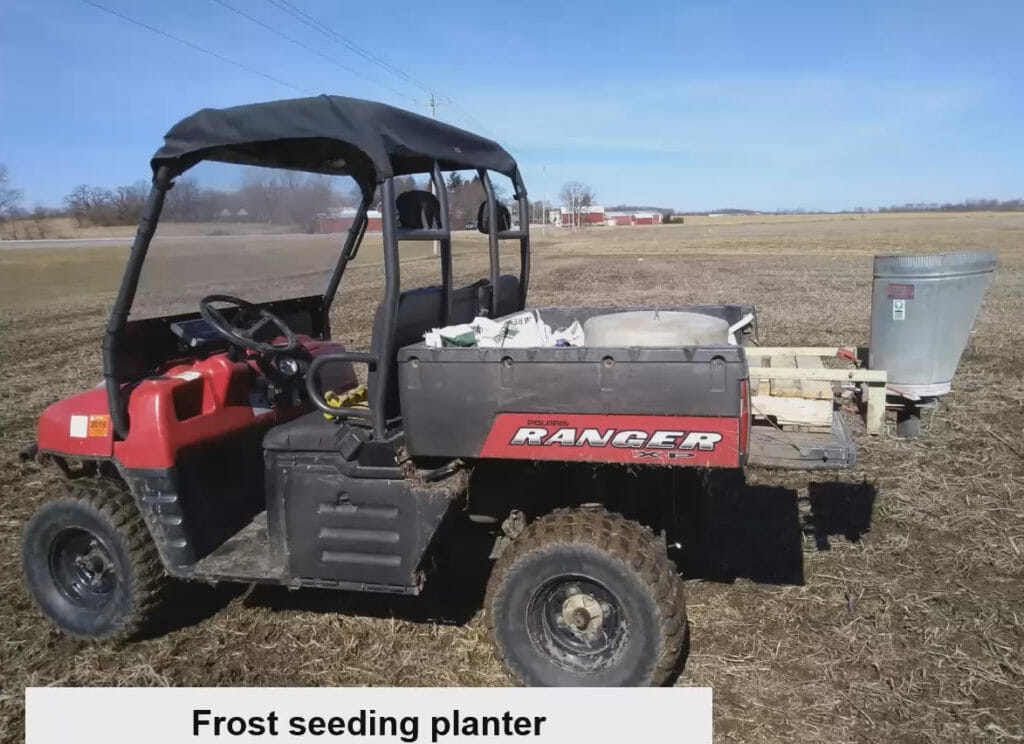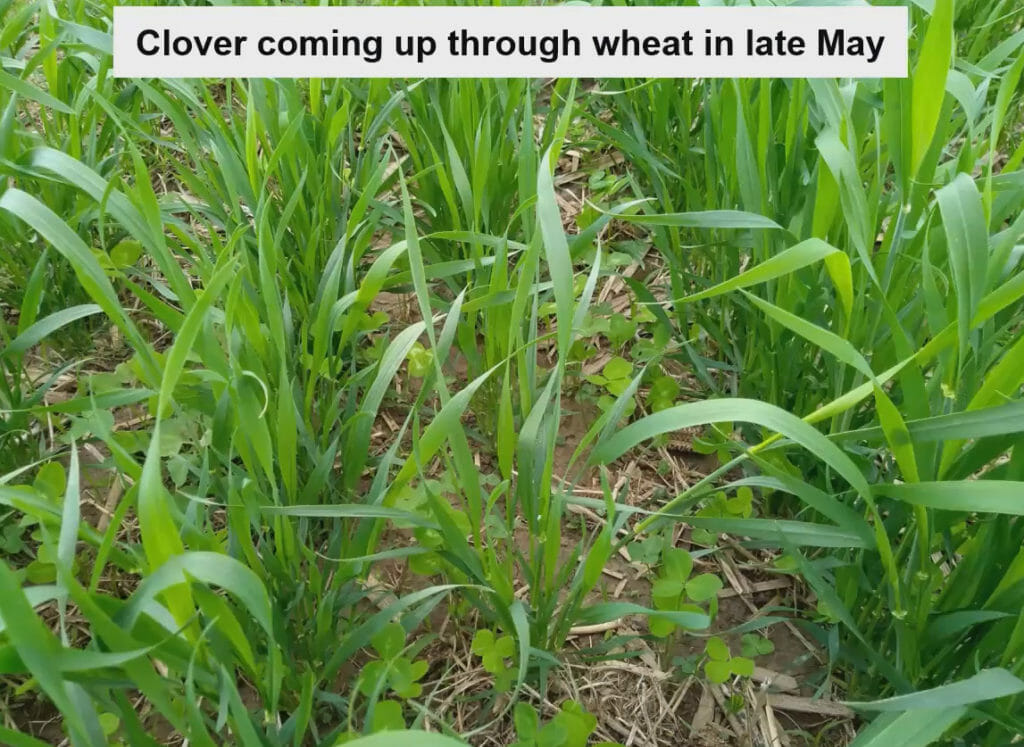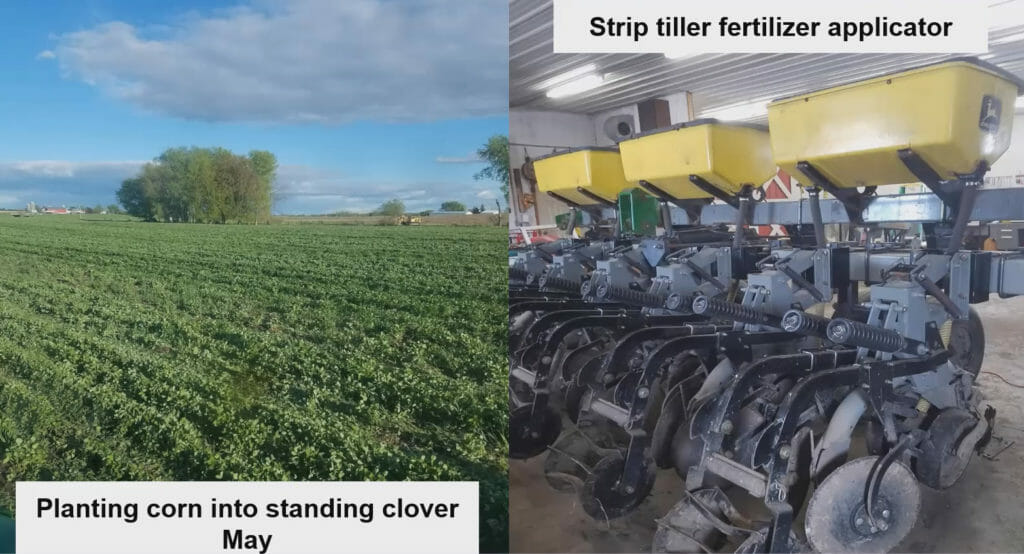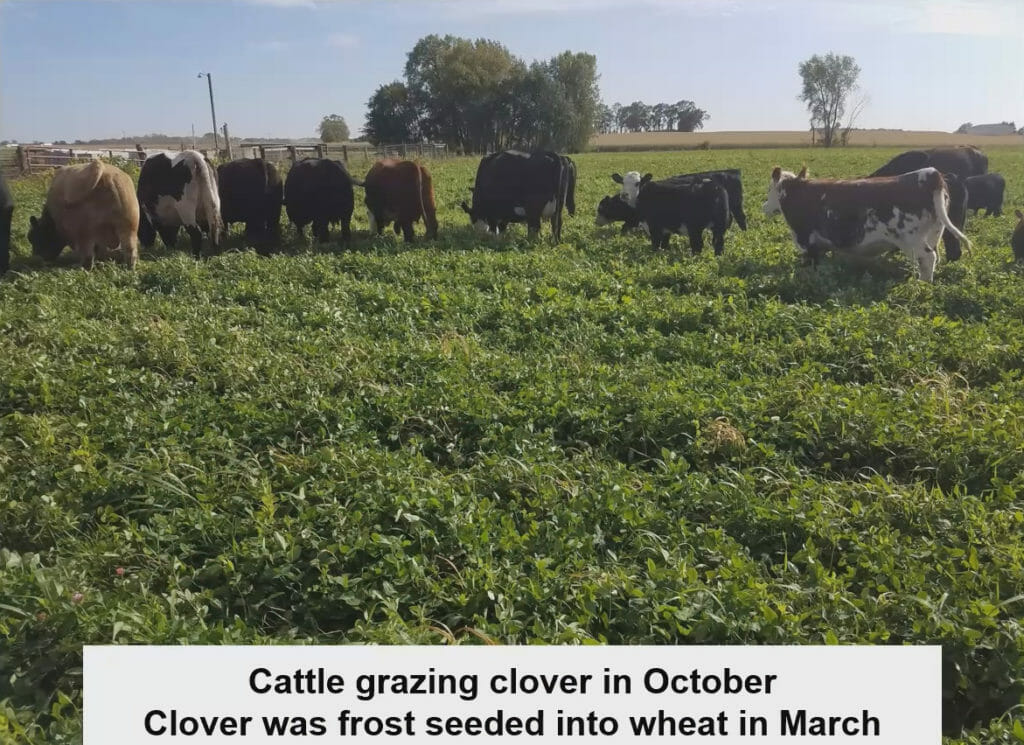Feeding, Grazing and Growing Nitrogen With Red Clover
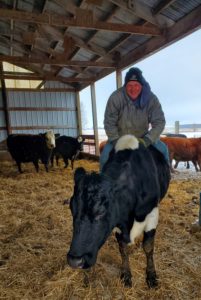 To kick off 2023 Practical Farmers of Iowa hosted a shared learning call with Wisconsin farmer Scott Schultz. Scott shared about how he makes full use of his red clover and diverse cover crop mixes on-farm.
To kick off 2023 Practical Farmers of Iowa hosted a shared learning call with Wisconsin farmer Scott Schultz. Scott shared about how he makes full use of his red clover and diverse cover crop mixes on-farm.
Scott grew up on a dairy farm. He now farms 200 acres of corn, soybeans, wheat, alfalfa and raises and grazes 30 cow-calf pairs. Scott got into cover crops as a mitigation tactic to become more resilient to extreme weather events, to improve soil health and provide a feed source for his cattle.
Clover Planting and Management
Scott keeps his system for frost-seeding red clover ahead of his spring wheat crop simple and quick. “I bought a seeder that goes on the back of an ATV. With an ATV equipped with GPS, I can go out on wetter ground and not leave deep tracks, and consistently put down a good bed of clover.” With this seeder he plants 10 lb/ac running at about 17 mph, allowing him to seed his clover quickly.
Clover can grow steadily under a wheat crop, potentially outpacing the wheat. Because Scott wanted a good wheat yield during a strong sales environment, he increased his wheat population from 120 lb/ac to 150, ensuring it would outcompete the clover. This provided a tremendous wheat year with high yield and good prices. Other years he may have opted instead for more clover in the mix for forage and feed.
On-Farm Uses for Red Clover
Harvesting for Feed
Before, growing red clover on his own farm, Scott baled a neighbor’s red clover and instead of charging him for it, he started feeding the hay to his cattle. After seeing red clover work as a cover crop on a neighbor’s farm and work as a feed source for his own cattle, he began harvesting and baling his own clover cover crop.
“The first couple years I did this, I was harvesting the clover. I would take the wheat off, let the clover recover, and come back to harvest the clover as feed for my beef cattle. The following spring, the clover came back again and I would take another cutting.”
Depending on the year, the clover can nearly outpace the wheat growth, which calls for a different management strategy. “I will just take the heads off the wheat, then come back to harvest the clover and the straw together. My animals love this: the clover is rich, probably 22% protein. Beef cows don’t need that, and they know it, so they eat the straw with it. And that seems to work well.”
Scott also harvests and feeds cover crop mixes to his cattle in the fall. For Scott, a hefty mix of cereal rye, hairy vetch, spring peas, sorghum, Sudan, brown flax, crimson clover, Alsike clover, Persian clover, nitro radishes, and sunflowers mixed with dry hay is a proven cow favorite. “Depending on when the frost is coming, I try to get it off before it freezes. Bale it wet in rounds, move it home and wrap it.”
Scott also considers his soil goals for a field and logistics when determining a harvest strategy. “I’m planting six times in three years. How far is the field from home? What is the soil type? If I’m trying to build up soil health, I probably will do less harvesting.”
Growing Nitrogen
Scott wasn’t leaving much nitrogen in the field by taking fall and spring clover cuttings. To get the nitrogen credit from clover, the biomass is best left in the field into the spring. When he leaves the residue, Scott and his agronomist give the red clover a credit of 40 units of N, meaning Scott can cut back his other nitrogen inputs.
“I’ve cut back on fertilizer. I’m planting corn on the wheat ground and using the same amount of fertilizer that I would if I was following soybeans. With our custom strip tilling machine, we’re only fertilizing six inches out of the 30-inch rows. That’s how we reduce N inputs because we’re not putting the fertilizer between the rows.” The field will get another broadcast application of urea in July but between clover and targeted fertilizer applications, overall N is reduced.
Grazing
Scott is excited about grazing his cows on cover crops. “This is my go-to thing. If I could graze every acre, I would, because the cattle like it, and they’re putting the manure back out there. No chemicals, I just let them eat. If I can put a fence around every acre, that’s where I would love to go.”
There is a catch to grazing clover; striking the balance between clover and grasses to mitigate bloat. “I found that if I load them up on grass before I put them out on clover, and I have volunteer wheat in there, too, I have never had a problem with bloat.” In addition to grazing red clover, Scott plants a 10-way cover crop mix after wheat that adds variety to the diet of his cattle into the fall.
To get the full benefit of grazing covers, he grazes a high density of cattle at once, but he would like to rotate even more. “I have groups of 10 cows with their calves on 10 acres, which is what works with my field size and cattle groups. They burn through it fast; the cattle will go through a 10-acre field in 3 weeks with some supplemental hay.”
Whether he grazes, harvests, or simply allows the clover to fix nitrogen, Scott has found a financial benefit from integrating clover and covers in his system.
Additional Red Clover Resources:
Roger Wenning’s Red Clover System
Nitrogen Replacement Value of Red Clover
For More Information on Small Grains and Extended Rotation:
Sign up for PFI’s monthly small grains email newsletter.
Receive shared learning call reminders to attend future small grains shared learning calls via Zoom.

